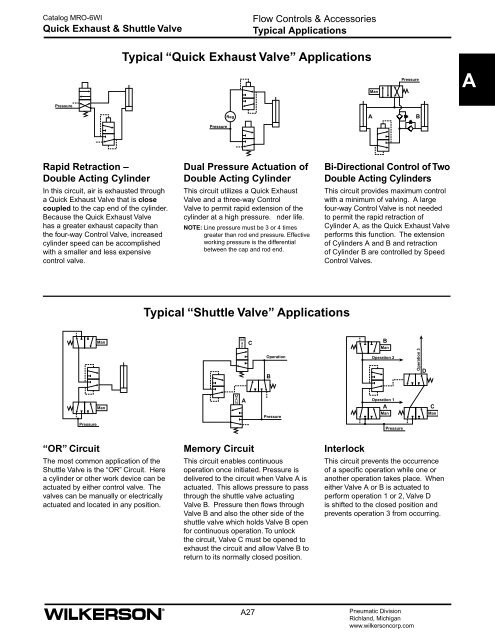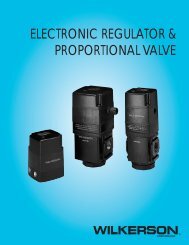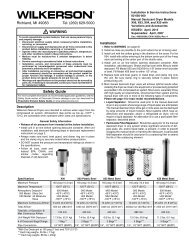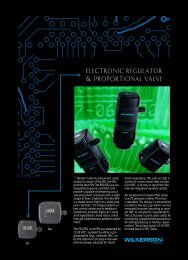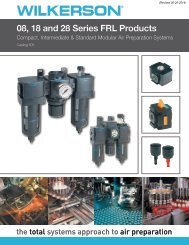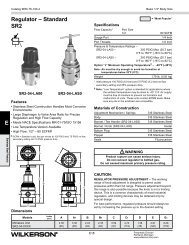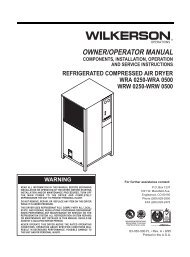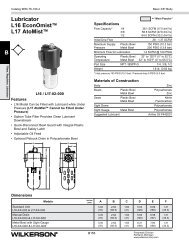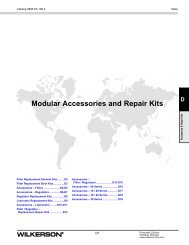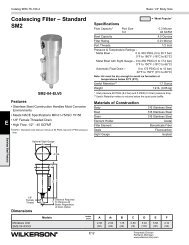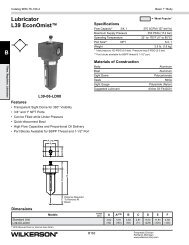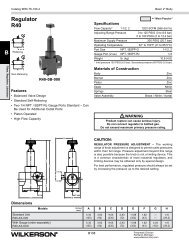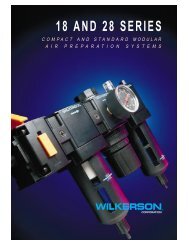A Flow Controls & Accessories
A Flow Controls & Accessories
A Flow Controls & Accessories
You also want an ePaper? Increase the reach of your titles
YUMPU automatically turns print PDFs into web optimized ePapers that Google loves.
Catalog MRO-6WIQuick Exhaust & Shuttle Valve<strong>Flow</strong> <strong>Controls</strong> & <strong>Accessories</strong>Typical ApplicationsTypical “Quick Exhaust Valve” ApplicationsManPressureAPressurePressureRegABRapid Retraction –Double Acting CylinderIn this circuit, air is exhausted througha Quick Exhaust Valve that is closecoupled to the cap end of the cylinder.Because the Quick Exhaust Valvehas a greater exhaust capacity thanthe four-way Control Valve, increasedcylinder speed can be accomplishedwith a smaller and less expensivecontrol valve.Dual Pressure Actuation ofDouble Acting CylinderThis circuit utilizes a Quick ExhaustValve and a three-way ControlValve to permit rapid extension of thecylinder at a high pressure. nder life.NOTE: Line pressure must be 3 or 4 timesgreater than rod end pressure. Effectiveworking pressure is the differentialbetween the cap and rod end.Bi-Directional Control of TwoDouble Acting CylindersThis circuit provides maximum controlwith a minimum of valving. A largefour-way Control Valve is not neededto permit the rapid retraction ofCylinder A, as the Quick Exhaust Valveperforms this function. The extensionof Cylinders A and B and retractionof Cylinder B are controlled by SpeedControl Valves.Typical “Shuttle Valve” ApplicationsManManM ANM anACOperationBPressureBManOperation 2Operation 1AManOperation 3DCManPressurePressure“OR” CircuitThe most common application of theShuttle Valve is the “OR” Circuit. Herea cylinder or other work device can beactuated by either control valve. Thevalves can be manually or electricallyactuated and located in any position.Memory CircuitThis circuit enables continuousoperation once initiated. Pressure isdelivered to the circuit when Valve A isactuated. This allows pressure to passthrough the shuttle valve actuatingValve B. Pressure then flows throughValve B and also the other side of theshuttle valve which holds Valve B openfor continuous operation. To unlockthe circuit, Valve C must be opened toexhaust the circuit and allow Valve B toreturn to its normally closed position.InterlockThis circuit prevents the occurrenceof a specific operation while one oranother operation takes place. Wheneither Valve A or B is actuated toperform operation 1 or 2, Valve Dis shifted to the closed position andprevents operation 3 from occurring.A27Pneumatic DivisionRichland, Michiganwww.wilkersoncorp.com


